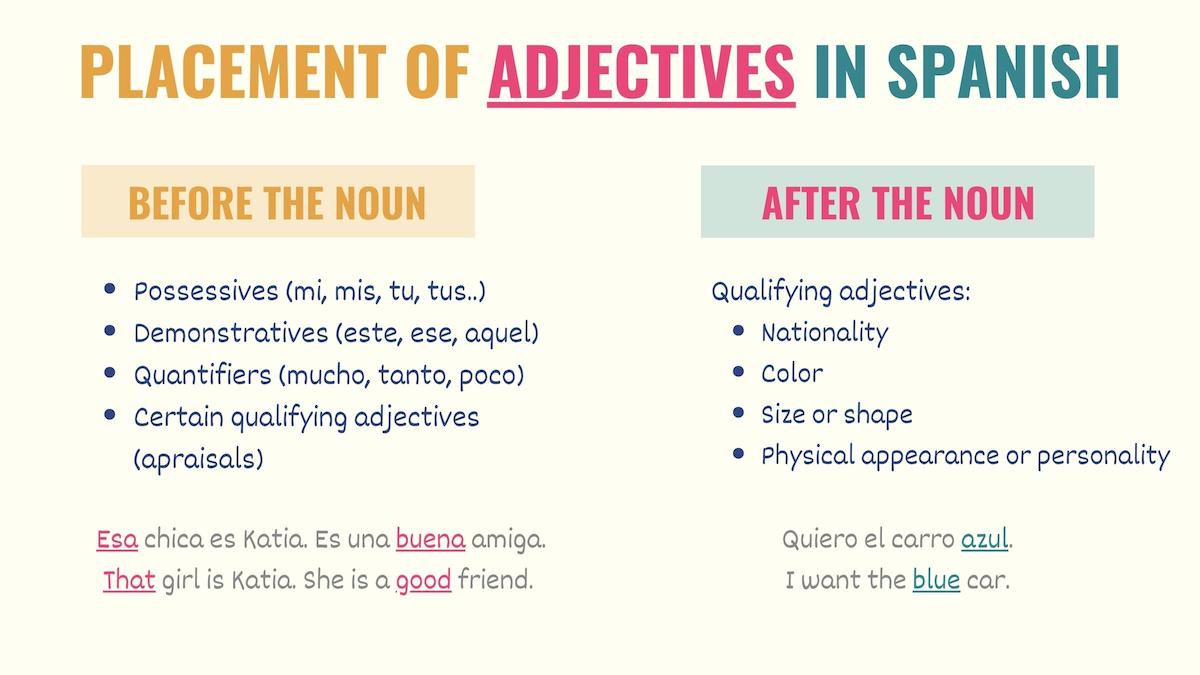Before in spanish language – Embarking on a linguistic journey, we delve into the intricacies of “antes” in Spanish, a versatile word that unveils a myriad of meanings and grammatical nuances. Join us as we explore its temporal, comparative, and preferential dimensions, unraveling its significance in shaping the language’s tapestry.
Unveiling the depths of “antes,” we will delve into its usage across diverse contexts, examining its role in expressing time frames, drawing comparisons, and conveying preferences. Along the way, we will encounter practical examples and common phrases, enriching our understanding of this essential Spanish term.
Usage and Meaning
The Spanish word “antes” has several meanings and can be used in various grammatical structures. It primarily means “before” or “earlier” and can refer to time, order, or preference.
Time
“Antes” is commonly used to indicate a point in time that precedes another event or action. For example:
- “Antes del mediodía, iré a la tienda.” (Before noon, I will go to the store.)
- “Me acosté antes de las diez.” (I went to bed before ten o’clock.)
Order
“Antes” can also indicate the order or sequence of events or actions. For example:
- “Primero debes comer, antes de salir.” (You should eat first, before you leave.)
- “Antes de hablar, piensa.” (Think before you speak.)
Preference
In some cases, “antes” can express a preference or choice. For example:
- “Prefiero el café antes que el té.” (I prefer coffee over tea.)
- “Antes muerto que deshonrado.” (I would rather die than be dishonored.)
Comparison with Similar Words
“Antes” is similar to other Spanish words that mean “before,” such as “previamente” and “anteriormente.” However, there are subtle differences in usage.
- “Previamente” typically refers to something that happened immediately before the present moment.
- “Anteriormente” generally refers to something that happened in the past, but not necessarily immediately before the present moment.
Temporal Contexts

Before an event, “antes” is used to express time. It can be used in a variety of ways to indicate the specific time frame before an event, including:
Specific Time Frame
To indicate a specific time frame before an event, “antes” is followed by the preposition “de” and the specific time. For example:
- Antes de las 10:00 (Before 10:00)
- Antes del mediodía (Before noon)
- Antes de la cena (Before dinner)
Indefinite Time Frame
“Antes” can also be used to indicate an indefinite time frame before an event. In this case, it is often followed by the imperfect subjunctive. For example:
- Antes de que llegaras (Before you arrived)
- Antes de que comiera (Before he ate)
- Antes de que saliera (Before she left)
Conditional Sentences
“Antes” can also be used in conditional sentences related to time. In this case, it is often followed by the conditional perfect. For example:
- Si hubiera llegado antes, te habría visto (If I had arrived earlier, I would have seen you)
- Si hubiera comido antes, no tendría hambre ahora (If I had eaten earlier, I wouldn’t be hungry now)
- Si hubiera salido antes, no me habría perdido (If I had left earlier, I wouldn’t have gotten lost)
Comparative Contexts: Before In Spanish Language
In Spanish, “antes” is often used to make comparisons between two or more things. It can be used to compare qualities, actions, or states of being.
There are several different structures that can be used to express comparisons with “antes.” One common structure is to use the following formula:
Antes de + noun/pronoun + verb + complement
In this structure, “antes de” is followed by a noun or pronoun, which is then followed by a verb and its complement. The complement can be a noun, an adjective, or an adverb.
For example, the following sentence compares the size of two cars:
El coche rojo es más grande antes que el coche azul.(The red car is bigger than the blue car.)
Another common structure for expressing comparisons with “antes” is to use the following formula:
Noun/pronoun + antes + de + verb + complement
In this structure, the noun or pronoun is followed by “antes” and “de,” which are then followed by a verb and its complement.
For example, the following sentence compares the speed of two runners:
María corre más rápido antes que Juan.(María runs faster than Juan.)
“Antes” can also be used to make comparisons between two different states or conditions.
For example, the following sentence compares the weather before and after a storm:
Antes de la tormenta, el cielo estaba despejado.(Before the storm, the sky was clear.)
In this sentence, “antes” is used to compare the state of the sky before the storm to its state after the storm.
Preference and Priority

In addition to indicating temporal order, “antes” can also be used to express preference or priority. When used in this sense, “antes” means “rather” or “preferably.” It is often used to indicate what is more important or desirable.
Expressing Preferences
To express a preference, “antes” is placed before the preferred option. For example:
- Prefiero ir al cine antesque quedarme en casa. (I prefer to go to the movies rather than stay home.)
- Me gusta más el café antesque el té. (I like coffee more than tea.)
Expressing Priorities
To express a priority, “antes” is placed before the more important or urgent task. For example:
- Tengo que terminar este trabajo antesde irme de vacaciones. (I have to finish this work before I go on vacation.)
- Es importante que llames a tu madre antesde que sea demasiado tarde. (It is important that you call your mother before it is too late.)
Examples and Usage
The word “antes” can be used in various ways to express different concepts in Spanish. It can be used to indicate time, make comparisons, express preference, or establish priority.
Here are some examples of how “antes” can be used in sentences:
Time
- Antes de salir, me duché.
- Antes de que llegara el tren, leí un libro.
- Antes de acostarme, me lavo los dientes.
Comparison
- El coche azul es más rápido que el coche rojo.
- María es más inteligente que Juan.
- El café es más amargo que el té.
Preference
- Prefiero el helado de chocolate al helado de vainilla.
- Me gusta más leer que ver la televisión.
- Prefiero ir al cine que ir al teatro.
Priority
- Primero tengo que terminar mi trabajo, antes de poder irme de vacaciones.
- Antes de comprar un coche nuevo, tengo que ahorrar dinero.
- Primero tengo que estudiar para el examen, antes de poder salir con mis amigos.
Common Phrases and Expressions, Before in spanish language
- Antes de nada
- Antes que nada
- Antes de que
- Antes de que te des cuenta
- Antes de que sea demasiado tarde
- Antes de que te vayas
Epilogue

In conclusion, “antes” emerges as a linguistic chameleon, adapting seamlessly to various contexts and conveying a range of meanings. Its mastery is a testament to the expressive power of the Spanish language, allowing us to navigate time, make comparisons, and express our priorities with precision and elegance.
FAQ Guide
What are the different meanings of “antes” in Spanish?
Antes can mean “before” in a temporal sense, indicating an event that occurred prior to another. It can also be used to express preference or priority, or to make comparisons.
How is “antes” used to express time?
Antes is used to indicate that one event occurred before another. It can be used with specific time frames, such as “antes de las 10 de la mañana” (before 10 in the morning), or with more general time periods, such as “antes de la guerra” (before the war).
How is “antes” used to make comparisons?
Antes can be used to compare two or more things, indicating that one is superior or preferable to the others. For example, “Prefiero el café antes que el té” (I prefer coffee before tea).